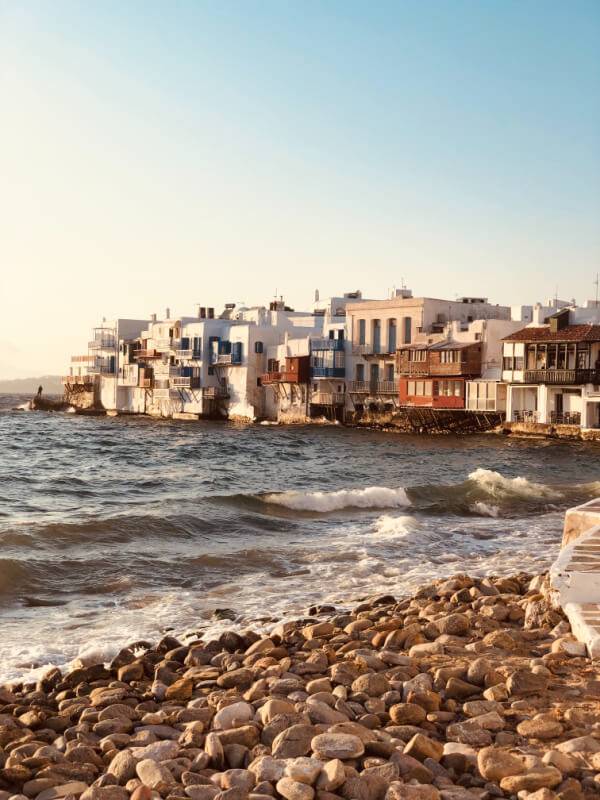Mykonos
Population: 10,134 (2011)
ISLAND OVERVIEW
Mykonos is a small island lying between Tinos, Syros, Paros and Naxos. The island has an area of only 85.5 square km (33.0 sq mi) and rises to an elevation of 372 metres (1,119 feet) at its highest point. The landscape in the North is rocky and uneven, while on the southern part beaches are sandy. As you move to the interior the rugged terrain transforms into hills, and the coastline has large bays, such as the bays of Agios Ioannis. There are no rivers on Mykonos, but there are two artificial lakes, close to Panormos Bay, which provide the island with water.
Mykonos has two villages, Chora and Ano Mera. The main village of Chora gets very crowded in the summer, the other village of Ano Mera is much quieter. The rest of the settlements are mainly tourist hamlets.
Tourism is a major industry, and Mykonos is renowned for its vibrant nightlife and for being a gay-friendly destination with many establishments catering for the LGBT community.
There is a regular ferry connection between Mykonos and Athens ports. Ferries depart from both Rafina and Piraeus ports. You can also reach Mykonos from many of the other islands in the Cyclades group and also Crete.

The Island & Its History
click image to view in Google Maps
Early inhabitants include Carians followed by Ionians from Athens. There were many people living on the neighbouring island of Delos, which meant that Mykonos became an important place for supplies and transit; however, the island was poor with limited agricultural resources. Its inhabitants were polytheists and worshipped many gods.
Mykonos came under the control of the Romans and then the Byzantine Empire, then was ravaged by the Catalans at the end of the 13th century and finally given over to direct Venetian rule in 1390.
Then in 1537, Mykonos was attacked and an Ottoman fleet established itself on the island. In June 1794 the Battle of Mykonos was fought between British and French ships in the island’s main harbour.
The Greek Revolution against the Ottoman Empire broke out in 1821 and Mykonos played an important role, led by the national heroine, Manto Mavrogenous. A statue of her sits in the middle of Mando Mavrogenous square in the main town.
As a result of sailing and merchant activity, the island’s economy quickly picked up but declined again during the late 19th century, after the Corinth Canal opened in 1904.
High quality clay and baryte, a mineral used as a lubricant in oil drilling, were mined on the eastern side of Mykonos until the late 1900s.
Prayer Points
- The people on the island will realize their need for God and their eyes will be opened to the truth and love of God through reading the Bible for themselves.
- The Lord will work in the lives of all the God-fearing religious people already living on this island, and bring healing & refreshment to their lives.
ADOPT THIS ISLAND
If you are committed to praying for this island and its region, please drop us a note, we would love to know about it and keep you posted with prayer updates!
By completing this form, I consent to receive content from Broad Reach Maritime in accordance with our Privacy Policy.

